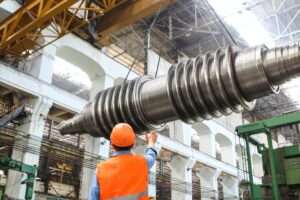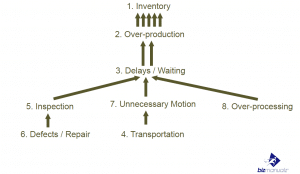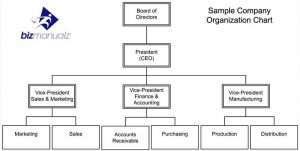How Can You Measure and Improve Efficiency?

A work-efficient facility is critical in ensuring that every business achieves its goals. Though it is impossible for a company to achieve 100 percent efficiency, manufacturers can increase efficiency. Business managers should develop strategies to reach that goal as much as possible. How can you measure and improve efficiency?
Work Efficient Facility: How Can You Measure and Improve Efficiency
Efficiency is a critical measure of a business’s organizational performance. Efficiency involves minimizing costs and maximizing profits, leading to the best use of the business’s resources. This article will discuss how you can measure and improve efficiency in the workplace.
How To Measure Efficiency in the Workplace
Efficiency is defined as the ratio of input to output. One way of measuring efficiency is knowing the amount of output you produce. However, a higher output does not mean higher efficiency. You could be using more resources than you need to produce, which would mean less efficiency.
Measuring Output
Takt time is the rate at which a product must be completed in order to meet the customer demand. The takt time concept can assist you in determining your level of efficiency. Takt time aims to match the production time with demand and is a key concept of a lean production system. Your company is efficient if it can meet demand using only the required time, machine hours, and materials.
Such a system can achieve its output without using any unnecessary resources (known as waste in lean thinking). Measuring the amount of time taken to complete a task can also help managers determine the efficiency of their team members.
With modern technology, employees can record their time on tasks into a time management system. Over time, managers can use these data in determining whether efficiency is decreasing, increasing, or remaining constant. Operators can also break down such data and determine an employee’s actual duration required to complete a specific task.
Machine Utilization
Specific work processes, especially in manufacturing or production, require particular machines. Operators and managers should monitor the utilization of such machines and identify their efficiency in the process. Machine operators should determine the amount of time and materials used to produce an item.
Inefficiency could result from a machine being allocated to too few people or too many people. If a machine is not allocated properly, it could be underutilized and may not achieve its optimal production level, or on the other hand that the human resource is underutilized. Both scenarios are unnecessarily increasing production costs so it is essential to optimize machine utilization.
Man to machine ratio (MMR) is a concept that identifies the ideal ratio of the total workforce to the number of machines. Many factories are setting man-to-machine ratios and using the ratio to optimize their production process.
The MMR ratio will assist managers by ensuring that operational machines are allocated to the correct number of people. As a result, the company utilizes the human resources and machines to their maximum potential.
Look into Wastage

Lean Wastes
Another critical factor in measuring efficiency is looking into wastage. A manufacturing process with massive wastage means that it is less efficient. Managers should assess material, labor, and machine hours when looking into wastage.
Material wastages refer to the loss of materials through overproduction during transportation, handling inventory, and defects. Though it is normal to have some level of material wastage, managers should strive that this wastage is minimized.
Efficient inventory management and reduced packaging materials are techniques that managers can use to ensure that material wastage is at the minimum. Recovering, sorting, and reusing these materials can also be of benefit.
Underutilization of human resources and machine hours can lead to idle time and eventually wastage. Idle time is when an employee or machine is ready and available but is not doing anything productive.
Idle time may arise from poor planning, power failure, non-supply of raw materials, or machine breakdown. Managers should properly organize their employees and schedule maintenance to eliminate idle time.
How to Improve Efficiency
As a manufacturer, you are probably dealing with substantial investments and high production expenses. If this is the case, there are many ways manufacturers can increase efficiency. Just a few examples include investing in human resources, using business automation, and modernizing your business processes.
Invest In Human Resources
One of the best ways of improving efficiency is investing in the right people. Human resources play a crucial role in any manufacturing process. All levels, from the top management through the machine operators to the interns, need to be skilled. However, hiring the most skilled employees may not be beneficial if the employees are not adequately organized.
A comprehensive approach to organizing will assist the management in achieving efficiency. Organizing staff ensures the optimal role-job fit for each employee. Assigning all employees roles that properly match their skills leads to higher efficiency rates. Properly organized employees can also achieve specialization, which leads to efficiency.
Managers should ensure that they hire and retain skilled employees in the organization. Employees should be multi-skilled and adaptable. It will also avoid confusion, delays, and duplication of work. Even the best-skilled employees need the training to be in line with any changes, especially in technology.
Ensure that your staff gets proper and regular training. Mentorship programs will also help older employees pass their skills and knowledge to junior employees. also, communication channels and chain of command must be clear, making it easy to seek assistance whenever needed.
Business Automation
Business automation has helped organizations achieve higher levels of efficiency and be competitive in the market. In addition, automation has reduced running costs and improved workplace safety. Collaborative robots such as autonomous mobile robots play a significant role in performing various tasks in manufacturing and warehousing floors.
AMRs are very flexible, allowing them to perform transportation, sorting, picking, and inventory control tasks. Automated guided vehicle systems have also assisted production, and warehousing floors improve efficiency. AGVs use fixed routes to transport heavy materials on the production floor.
Many industries are looking at various ways to reap the various benefits of automation. However, automation may require a substantial initial capital investment. In addition, there are many concerns of over reliance on technology and the safety in using robots that can change direction without human intervention.
Modernizing Business Processes
Modernizing business processes can also help you improve efficiency at the workplace. One benefit is quickly sharing critical information with key team members. Such relevant and timely information may help in avoiding bottlenecks within the organization.
Having highly trained staff may not be efficient if they lack modern tools and equipment to perform their duties. The lean tools and techniques will help on avoiding wastage and eventually improve efficiency.
Intelligent devices and technologies can help make the workplace safer and streamline business processes. Intelligent devices such as smart wearables and the Internet of Things can be applied in collecting and analyzing information.
Managers can also use software to modernize business processes. For example, a maintenance management system can play a considerable role in passive maintenance and ensure no idle time due to machine breakdown.
Measure and Improve Efficiency in the Workplace
No matter the size of your business, manufacturing companies can reduce costs and efficiency is a critical factor in maintaining a competitive edge. As a result, managers develop various strategies deliberately aimed at improving efficiency.
However, managers should first understand their business’s efficiency level before they adopt any new method of improving efficiency. In addition, they should analyze each strategy’s benefits and costs before implementation.
______________________________________________________________________
Luke Goodwin is an experienced content marketing manager with a demonstrated history of working in the logistics and supply chain industry. Currently, he works at FlexQube where he creates valuable content relevant to the intralogistics and material handling industries. To learn more about FlexQube and see more articles from the industry you can visit their news website.

















Leave a Reply